79 F. high temperature yesterday in St. Cloud.
81 F. average high on August 11.
81 F. high on August 11, 2016.
August 12, 1821: An eight-day heat wave ends at Ft. Snelling. Temperatures were in the 90's each day.
Trade-off: Longer Boating Season, More Mosquitoes
Is the glass half-empty or half-full? The world isn't ending, it's warming. That will ratchet up environmental threats, but help to spark new technologies and business opportunities.
I've gone on record with my extended outlook: Minnesota will make out better than many other states, including Florida, Texas, Arizona and California. We have water, and our climate is trending even wetter over time.
The local NWS reports the last 12 months have been the wettest on record (since 1837) in the Twin Cities, with 40.72 inches of rain.
Growing season and boating/golfing season is longer now, but so is mosquito season. According to climate guru Mark Seeley, skeeter season in Minneapolis "is more than thirty days longer today than it was in 1980."
Today should be the sunnier, drier, nicer day of the weekend with a few T-showers pushing into far western Minnesota. Sunday brings a better chance of a few hours of showers & storms. If anyone asks next weekend looks warmer with highs in the mid-80s.
Ignore the Back to School ads. There's plenty of summer left to enjoy. More skeeters too.
Mosquito Season in Minnesota 30 Days Longer Now Than in 1980. Details via climatologist Mark Seeley in an article at Yale Climate Connections: "...He says mosquitoes thrive in warm, wet conditions. A warm, early spring means mosquitoes have a chance to breed sooner, leading to more mosquitoes and, potentially, more disease. As the world warms, spring is arriving earlier and earlier. Seeley: “Something like 75 percent of the last 20 spring seasons we’ve had have come on extraordinarily early.” Intense rainfalls have also become more frequent. When the ground cannot absorb more water, standing pools provide mosquitoes with an ideal habitat and breeding ground. It all adds up to a long buggy summer. On average, the mosquito season in Minneapolis is more than thirty days longer today than it was in 1980..."
Wettest 12 Month Period on Record. The Twin Cities office of the National Weather Service tweeted this out yesterday. 40.72" precipitation (rain and melted snow) since August of 2016, making this the wettest 12-month period since 1837.

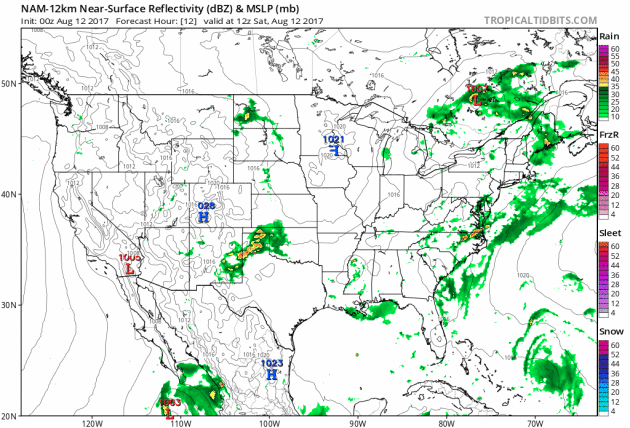
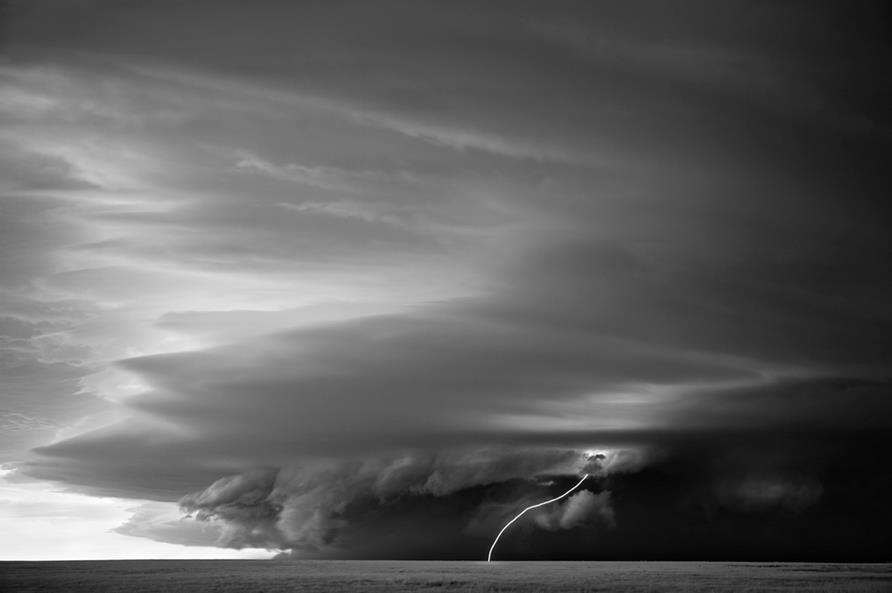
30-30 Rule. There's a pernicious, pervasive belief that technology will save us - from ourselves. I'm not so sure. Apps on smartphones are great, but no replacement for common sense. In recent years I've run into coaches who don't evacuate the ball field until and unless "they can see lightning". Thunder? Rain? No problem - let the kids play! That's risky, considering any rumble of thunder implies that lightning is nearby. Lightning can travel up to 10 miles, horizontally. And just because the rain has stopped doesn't mean the lightning risk has passed. It's smart to wait at least 30 minutes after the last thunderclap before heading back out onto the field. Remember the "30-30 Rule". There have been 12 lightning fatalities across the USA this year. It pays to be paranoid. (Photo credit: Mitch Dobrowner).
It Wasn't Even a Hurricane, But Heavy Rains Flooded New Orleans as Pumps Faltered. The Washington Post reports: "...Panic and rough memories have surfaced across New Orleans this week as residents cope with yet another reminder that parts of the city sit as much as seven feet below sea level. And even though U.S. taxpayers have spent nearly $15 billion rebuilding the city’s flood protections since 2005, few here are confident the fixes can keep the city dry for long. Unlike during Hurricane Katrina, the problem over the weekend wasn’t the 133 miles of levees and flood walls that protect New Orleans from the tidal surges of the Gulf of Mexico or Lake Pontchartrain, which hangs over the northern and eastern edge of the city. Instead, parts of New Orleans were underwater because the city’s hundreds of miles of drains and pumps couldn’t bail rainwater fast enough..."
Photo credit: "The Circle Food Store was engulfed in floodwater in New Orleans on Saturday. Officials in New Orleans say heavy rainfall overwhelmed the city's pump stations." (Brett Duke/NOLA.com/Times-Picayune/Associated Press).
Insurer: Miami Is More Vulnerable to Hurricanes Like Andrew. Here's an excerpt from a story at AP: "Almost 25 years have passed since a Category 5 hurricane struck south of Miami, and the city’s vulnerability to catastrophic storm damage has grown exponentially, according to a new insurance underwriters’ analysis. At the time, Hurricane Andrew was the most expensive natural disaster in U.S. history, causing more than $26 billion of damage in Florida’s most populous areas, including $15.5 billion in insurance payouts. Stringent building code enforcement followed in Miami, but so did population growth, coastal development and climate change. “Our concerns lie with the fact that even though we’ve made good changes, 25 years later you have a much larger population living in Florida, and people forget what can happen or they don’t know what could happen,” said Monica Ningen, chief property underwriter for the U.S. and Canada at Swiss Re..."
File photo credit: "In this Aug. 25, 1992, file photo, rows of damaged houses sit between Homestead and Florida City, Fla. Almost 25 years after Hurricane Andrew struck south of Miami, a new insurance underwriters’ analysis says the city’s vulnerability to another Category 5 hurricane has grown exponentially." (AP Photo/Mark Foley, File).
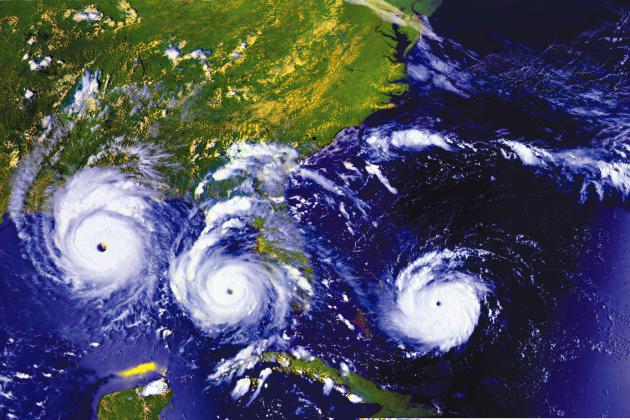
As Hurricane Andrew Memories Fade, Florida Weakens Building Codes.
What short attention spans and memories we have, taking steps which may
help special interests in the short term, but leave us more vulnerable
down the road. Here's a clip from USA TODAY: "...At
the core of that growing dispute is a simple calculation: the
tougher the building code, the more it costs to build a home. Florida's
codes dictate construction methods, require wind testing and mandate
extensive training and oversight for inspectors. Those standards, home
builders argue, can add unnecessary costs that don't amount to a
hurricane-proof home. Insurers and home owners' associations say the
tough codes save money in the long run. At the core of that growing
dispute is a simple calculation: the tougher the building code, the more
it costs to build a home. Florida's codes dictate construction methods,
require wind testing and mandate extensive training and oversight for
inspectors. Those standards, home builders argue, can add unnecessary
costs that don't amount to a hurricane-proof home. Insurers and home
owners' associations say the tough codes save money in the long run..."
Hurricand Andrew satellite timelapse: NASA.
— At any given time, nearly one-eighth of the world’s land mass was in severe drought. That’s far higher than normal and “one of the worst years for drought,” said report co-author Robert Dunn of the United Kingdom Met Office.
— Extreme weather was everywhere. Giant downpours were up. Heat waves struck all over the globe, including a nasty one in India. Extreme weather contributed to a gigantic wildfire in Canada.
— Global sea level rose another quarter of an inch (3.4 millimeters) for the sixth straight year of record high sea levels.
— There were 93 tropical cyclones across the globe, 13 percent more than normal. That included Hurricane Matthew that killed about 1,000 people in Haiti.
— The world’s glaciers shrank — for the 37th year in a row — by an average of about 3 feet (1 meter)..."

(To understand turbulence from a flight attendant’s point of view, read the presentation, “Turbulence in the Cabin,” by Candice Kolander.)
EPA Report Shows Economic Growth, Environmental Rules Can Co-Exist. Here's a snippet from USA TODAY: "...A new report from
the Environmental Protection Agency found that since Congress passed
the Clean Air Act in 1970, the economy has more than tripled and the
number of vehicle miles traveled every year has nearly doubled — all
while the nation’s population and annual energy consumption has surged.
At the same time, the levels of six key air pollutants — carbon
monoxide, lead, nitrogen dioxide, ozone, particulate matter and sulfur
dioxide — have declined dramatically. The number of unhealthy air
quality days annually in 35 of America’s largest cities has fallen
significantly while the visibility at national parks across the country
once shrouded in haze has improved substantially,
the report said. “The U.S. leads the world in having clean air and a
strong economy due to implementation of the Clean Air Act and
technological advancements from American innovators,” EPA’s Trends
Report declares..."
* The EPA report referenced above is here.
More Cities Require Solar as Prices Fall and Sea Levels Rise. Here's a clip from a recent USA TODAY story that made the case for an ROI with solar: "...Besides
helping curve green house gas emissions, there are many short term
benefits of installing solar panels. Ulrich said homeowners often see
immediate savings after installing systems. "There has been research
that solar is cost competitive in most of the large cities in the U.S.,"
Ulrich said. Solar is often a smart long term investment, she said,
adding that the value of solar doesn't depreciates like the value of a
home or car would. Stoddard, whose home is powered by solar
energy, maintains purchasing solar panels are one of the best
investments a homeowner can make. “If you don’t have solar on your roof
and you don’t have solar, you’re leaving money on the table,” he said.
“It’s paying you money. There’s not many great deals in this world like
this.”
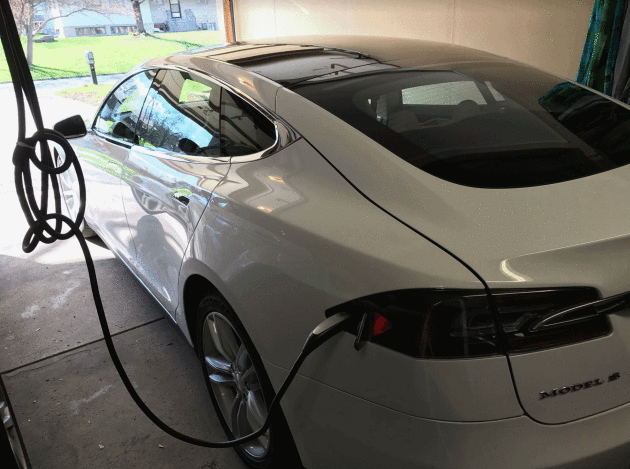
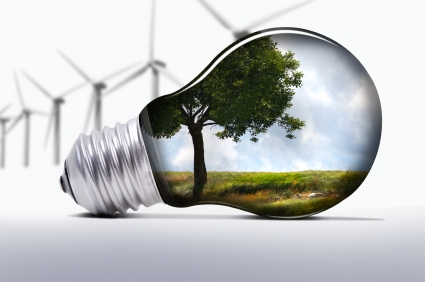
Target Corp. agreed to buy 100 megawatts of output from an Infinity Renewables wind project in Kansas. Power from the 474-megawatt Solomon Forks wind facility will help offset the energy used at 150 Target stores in the area, Santa Barbara, California-based Infinity said in an emailed statement Wednesday. Terms weren’t disclosed..." (File photo: Star Tribune).
Image credit: "The black disk in this composite image shows the area blocked out by the coronagraph of the Solar and Heliospheric Observatory (SOHO). The sun itself, as seen by the Solar Dynamics Observatory, is shown for scale." ESA/NASA
TV's Ad Apocalypse Is Getting Closer. So says the author of a story at The Atlantic: "Disney announced on Tuesday that it will stop selling content to Netflix by 2019 and will instead launch two streaming services—one
with sports content from ESPN (which it owns) and another for movies.
It is a dramatic announcement with far-reaching implications for the
future of television and, pulling back the lens even farther, the U.S.
tech and media landscape. Before getting to the future, let’s start with
the present of television. Pay TV—that is, the bundle of channels one
can buy from Comcast or DirecTV—is in a ratings free fall among all
viewers born since the Nixon administration. Since 2010, the time that
Americans under 35 have spent watching television has declined by about
50 percent, according to Matthew Ball, the head of strategy at Amazon Studios..." (Image credit above: Kleiner Perkins).
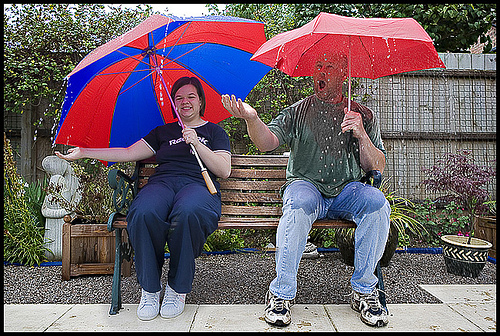
The Secret to Office Happiness Isn't Working Less - It's Caring Less. A subtle, yet important distinction, according to the author at Quartz: "We live in an age of “total work.” It’s a term coined by the German philosopher Josef Pieper just after World War II—describing the process by which human beings are transformed into workers, and the entirety of life is then transformed into work. Work becomes total when all of human life is centered around it; when everything else is not just subordinate to, but in the service of work. Leisure, festivity, and play come to resemble work—and then straight-up become it. Even our co-circular habits play into total work. People work out, rest and relax, eat well, and remain in good health for the sake of being more productive. We believe in working on ourselves as well as on our relationships. We think of our days off in terms of getting things done. And we take a good day to be a day in which we were productive..."
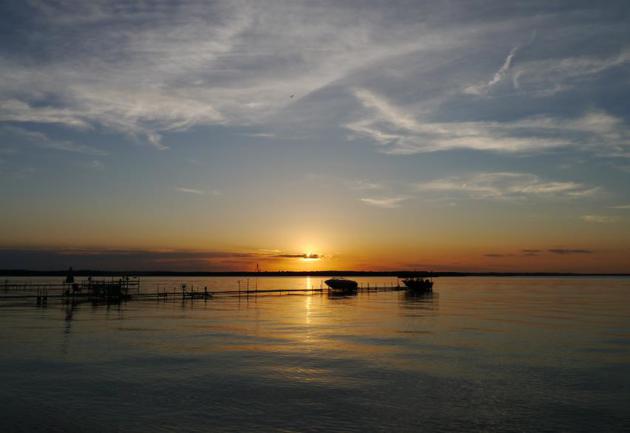
People in Rich Countries are Dying of Loneliness. A story at Quartz made me do a double-take: "Sociologists
have long been warning about the dangers of increased isolation thanks
to aging populations, scattered families, and cultures that promote the
individual over the collective. Now, new research analyzing previous
studies suggests people who fall into the loneliness trap are 50% more
likely to suffer an early death than those who remain socially
connected. Previous studies have found that as many as a third of Americans
are lonely....Such “epidemics,” while not confined to rich countries,
are linked to prominent features of affluent culture: longer life
expectancy, decreasing marriage rates, people having fewer children, more people getting divorced, and more people living alone..."
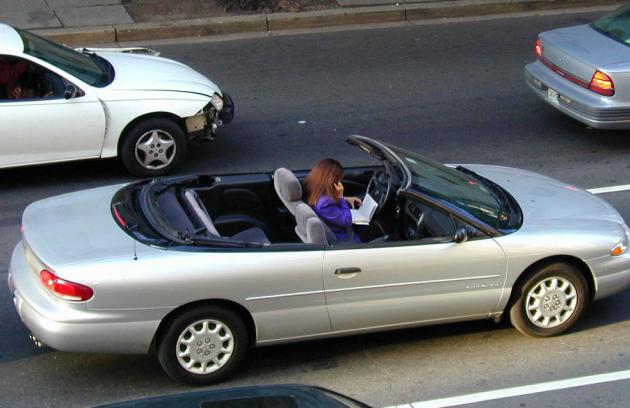
Drink Tea and Wine to Reduce Flu Symptoms, Says Research. Hey, it's science - have another glass of wine. Harper's Bazaar reports: "When you start feeling under the weather and want to stop flu
in its tracks, your answer could be as simple as heading to your wine
rack or putting on the kettle. Researchers from the Washington
University School of Medicine discovered that a compound found in foods
such as red wine, blueberries and black tea could help gut bacteria to
prevent severe influenza infections in mice, reports Spectator Health. It is thought that consuming the plant flavonoid compound before flu develops may reduce symptoms and flu's impact..."
Weather Presenter Loses It When a Giant Seagull Drops By. Check out the video, courtesy of The Dodo: "Tara Jean Stevens, co-host of the Canadian morning show Vancouver's Breakfast Television,
is responsible for delivering the forecast each day, but she certainly
didn't see this one coming. While presenting the weather on Tuesday,
Stevens was suddenly forced to share the airwaves with a scene-stealing
seagull. The bird, it seems, had decided to rest his wings directly in
front of the station's live skyline camera, making him look gargantuan.
It was almost like he knew exactly what he was doing. "I won't let him
distract me, though," Stevens said. Turns out, that was a promise she
couldn't keep..."
TODAY: Blue sky, light winds, nicer day of the weekend. Winds: NW 3-8. High: near 80
SATURDAY NIGHT: Risk of a T-shower, especially west of the cities. Low: 60
SUNDAY: Few showers, possible thunderstorms. Winds: SE 3-8. High: 74
MONDAY: Mix of clouds and sun, a drier day. Winds: SE 7-12. Wake-up: 59. High: 78
TUESDAY: Partly sunny and sticky. Winds: SE 10-15. Wake-up: 62. High: 83
WEDNESDAY: Few showers and T-storms likely. Winds: S 10-15. Wake-up: 66. High: 81
THURSDAY: Sunnier and nicer. Still quite humid. Winds: NW 7-12. Wake-up: 67. High: 83
FRIDAY: Muggy, a few pop-up PM storms? Winds: SW 8-13. Wake-up: 63. High: 85
* Double rainbow photo above courtesy of Heidi Rusch.
Climate Stories...
New Studies and Catastrophes Give Climate Change Deniers a Lot to Deny. Here's a clip from a column entry at The Miami Herald: "Denial begins to look like psychosis. Just in the past week, a cascade of new findings and climate anomalies have added to the scientific consensus that we’re cooked. Miami in particular. We’re seeing wildfires in Greenland, for heaven’s sake. Famously soggy Seattle has just gone through a record 54 consecutive days (and counting) without rain. On Thursday, Arctic explorer Pen Hadow left Nome, Alaska, in a 50-foot sailboat intent on something unfathomable before the onset of global warming. He and his crew intend to sail through the melting ice pack to the very North Pole. “If we can produce a visual image of a sail boat at 90 degrees north I think that could become an iconic image of the challenge that the twenty-first century faces,” Hadow wrote in his blog. That image would nicely illustrate the National Climate Assessment draft report publicized this week by the New York Times. “Evidence for a changing climate abounds, from the top of the atmosphere to the depths of the oceans,” noted the assessment, based on input by scientists from 13 different federal agencies..."
Photo credit: "A young student on her bicycle carefully crosses the water logged street on Lincoln Road Court as water levels have risen on the begimming of the annual King’s Tide where certain areas of Miami Beach become flooded, on Oct. 13, 2016." C.M. GUERRERO.
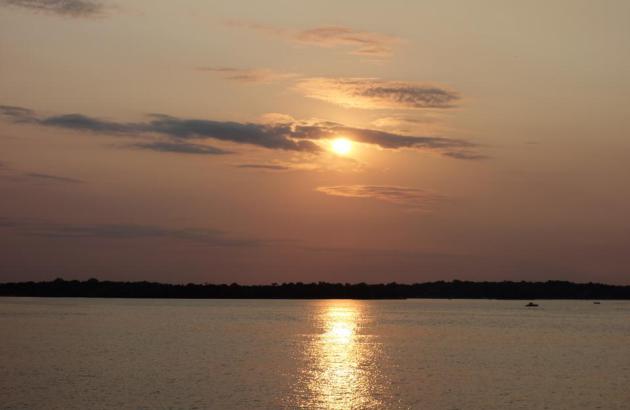
Many of Europe's Rivers Are Flooding Earlier in Spring as Climate Changes. A new study tracks 50 years of seasonal river flooding and what the changes in timing mean for water management and safety. Details from InsideClimate News: "Spring
flooding along many of Europe's rivers is starting weeks earlier now
than it did 50 years ago, and some winter flooding is starting later, as
the climate changes, a new study shows.
The changes in timing are geographically nuanced, but the trends and
their connections to rising global temperatures are clear and are likely
to continue into the next several decades, a team of international
scientists wrote Thursday in the journal Science.
The researchers, from Sweden, England, Germany and Austria, analyzed
data from more than 4,200 river gages between 1960 and 2010, covering
all major European river basins..."
Photo credit: "Understanding
the changing timing of seasonal floods helps communities prepare for
flood risks and water reservoir managers schedule release times." Credit: ASI/Land Tirol/BH Landeck.
Photo credit: Carlos Tischler, NurPhoto/Sipa USA/TNS. "U.S. Secretary of Homeland Security John Kelly in Mexico City on Feb. 23, 2017. Kelly told a group of Latin American leaders on Friday, May 5, 2017, that the United States’ insatiable demand for illegal drugs has fueled the violence in Central America that’s driving migrants to the United States."
Sailing to the North Pole, Thanks to Global Warming. Here is an excerpt of an interview at NPR:
PEN HADOW: "We are not going to be able to carry on mindlessly taking whatever we want from the environment. And I think a lot of people are looking to this as a symbol for a new debate.
KWONG: Because if two sailboats can get there, a whole universe of economic activity opens up around shipping and fishing. Both Russia and Denmark have filed claims for the North Pole, and other countries want to expand their Arctic territory, too. Unlike the South Pole, the North Pole has no legal protections. Hadow wants to shine a spotlight on the vulnerability of this region by being the first to get there.
HADOW: It is a strange challenge and ambition indeed - working very hard to put together a project that you don't actually want to succeed...."
File photo credit: Esther Horvath.
Yes, You Can Blame Climate Change for Extreme Weather. Not all extreme weather, but does a warmer (wetter) climate amplify heat, drought and rainfall rates? Yes. Connecting the dots with wildfires, hurricanes and severe local storms isn't nearly as clear-cut, at least not yet. Here's an excerpt from TIME.com: "...For years, careful climate scientists — and the politicians like Obama who listened to them — have avoided saying that any particular event was directly caused by climate change, even as they called for urgent action to address the issue. But researchers now say they can use a variety of approaches to show that climate change is all but certainly causing and worsening extreme weather events. A comprehensive new report from scientists at 13 federal agencies, published this week by the New York Times as it awaits review by the Trump administration, highlights the change in thinking. The scientists behind the report, leaders in their respective fields, say researchers can use statistical analysis, modeling and other methods to determine how much climate change increased the likelihood of a given event..."
Graphic credit: Lehmann et all, 2015.
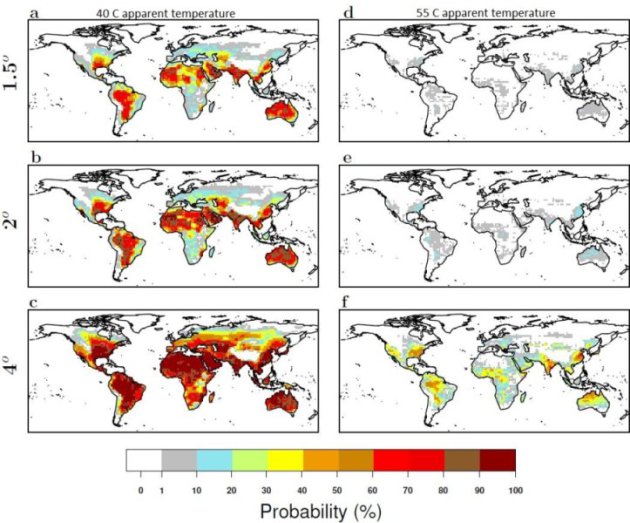
Image credit: "Millions to be exposed to extreme Humidity and heat globally." Credit: Image courtesy of European Commission, Joint Research Centre (JRC)
No comments:
Post a Comment